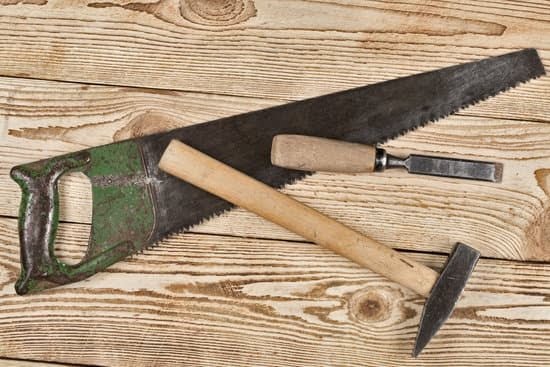Is ammonia good for cleaning woodwork? This question often comes to mind when considering the best way to care for and maintain wood surfaces in our homes. In this article, we will delve into the use of ammonia as a cleaning agent for woodwork, exploring its properties, advantages, and drawbacks. By understanding the effectiveness of ammonia for cleaning woodwork, you can make an informed decision on whether it is the right choice for your cleaning needs.
Ammonia is a commonly used household cleaner known for its tough degreasing and disinfecting properties. When used properly, it can effectively remove dirt, grime, and stains from wood surfaces. However, there are certain factors to consider when using this powerful cleaner on woodwork. In this article, we will explore what exactly makes ammonia an effective cleaner for wood surfaces and how it compares to other cleaning solutions.
In addition to discussing the pros and cons of using ammonia for cleaning woodwork, we will also provide safety precautions to take when using this powerful chemical. We will also explore alternative natural cleaning solutions for those who prefer to avoid harsh chemicals when caring for their wood surfaces. Stay tuned as we dive into the step-by-step guide on how to effectively clean woodwork with ammonia and tips for maintaining the quality of woodwork when using this cleaner.
What Is Ammonia and Its Cleaning Properties
Ammonia is a common cleaning agent that is often used for various household cleaning purposes, including the cleaning of woodwork. It is a colorless gas with a pungent odor, and it is highly effective in cutting through grease and grime. Ammonia is an alkaline substance, which means it can effectively remove tough stains and dirt from wood surfaces.
One of the key cleaning properties of ammonia is its ability to penetrate and break down stubborn dirt and residue on woodwork. When mixed with water, ammonia creates an effective solution for removing built-up grime and grease without causing damage to the wood surface. It also evaporates quickly, which reduces the risk of leaving behind streaks or residues on the woodwork.
Despite its effectiveness as a cleaning agent, there are some drawbacks to using ammonia for cleaning woodwork. One of the main concerns is that ammonia can be harsh on certain types of finishes, particularly if they are not sealed properly. Additionally, the strong odor of ammonia can be off-putting to some individuals, and proper ventilation is necessary when working with this substance.
Lastly, it’s important to note that while ammonia can be an effective cleaner for woodwork, it’s essential to use it safely. This includes diluting it properly with water, wearing protective gear such as gloves and a mask, and ensuring that the area being cleaned is well-ventilated.
| Cleaning Property | Effectiveness |
|---|---|
| Penetration | Highly Effective |
| Ease of Evaporation | Reduces Residue Risk |
Pros and Cons of Using Ammonia for Cleaning Woodwork
Ammonia, a common household cleaning agent, is often used for cleaning woodwork due to its ability to cut through grease and grime. However, it also comes with its own set of pros and cons.
Pros of using ammonia for cleaning woodwork:
- Effective at cutting through grease and grime
- Removes stubborn stains and dirt from wood surfaces
- Leaves woodwork with a clean and shiny finish
Cons of using ammonia for cleaning woodwork:
- Strong odor that may be unpleasant for some individuals
- Can irritate the skin, eyes, and respiratory system if not used properly
- May damage certain types of wood finishes or surfaces if not diluted properly
It is important to weigh these pros and cons before deciding to use ammonia for cleaning woodwork. While it can be effective in removing tough dirt and grime, the strong odor and potential for damage to certain surfaces should be taken into consideration. Safety precautions must be taken when using ammonia for cleaning purposes.
Despite the drawbacks of using ammonia for cleaning woodwork, it remains a popular choice due to its effectiveness. However, individuals who are sensitive to strong odors or have respiratory issues should consider alternative natural cleaning solutions for their woodwork.
Safety Precautions When Using Ammonia for Cleaning Woodwork
Using ammonia for cleaning woodwork can be effective, but it is important to take the necessary safety precautions to ensure the well-being of yourself and others in the vicinity.
Personal Protective Equipment
When working with ammonia, it is crucial to wear protective gear such as gloves and goggles to prevent direct contact with the chemical. Additionally, wearing a mask or working in a well-ventilated area can help minimize inhalation of fumes.
Dilution
Ammonia should always be diluted with water before use. It is recommended to follow the manufacturer’s instructions for dilution ratios to ensure safe and effective cleaning.
Avoid Mixing With Other Chemicals
Mixing ammonia with other common household cleaners, such as bleach, can create toxic fumes that are harmful when inhaled. It is important to use ammonia on its own and store it separately from other cleaning solutions.
Safe Disposal
After using ammonia, it is essential to dispose of any leftover solution properly. This may involve diluting it further before pouring it down the drain or taking it to a designated hazardous waste disposal facility.
Alternative Natural Cleaning Solutions for Woodwork
When it comes to cleaning woodwork, ammonia is a popular choice due to its powerful cleaning properties. However, some individuals may prefer to use alternative natural cleaning solutions for woodwork. These natural options are not only effective but also safer for the environment and your health.
Vinegar and Water Solution
One of the most popular natural alternatives to ammonia for cleaning woodwork is a solution of vinegar and water. Vinegar is known for its ability to cut through grease and grime, making it an effective cleaner for wood surfaces. Simply mix equal parts of white vinegar and water in a spray bottle and use this solution to clean your woodwork.
Olive Oil and Lemon Juice
Another natural option for cleaning woodwork is a mixture of olive oil and lemon juice. This combination not only cleans but also polishes the wood, leaving it with a beautiful shine. Mix one part olive oil with one part lemon juice, apply it to a cloth, and use it to wipe down your wood surfaces.
Baking Soda Paste
Baking soda is known for its abrasive properties, making it an excellent natural solution for scrubbing away tough stains on woodwork. Simply mix baking soda with water to create a paste and use a soft cloth or sponge to gently scrub the surface of your woodwork.
By using these alternative natural cleaning solutions, you can effectively clean your woodwork without the use of harsh chemicals like ammonia. Not only are these options safe and environmentally friendly, but they also provide excellent results when used properly.
Step-by-Step Guide on How to Effectively Clean Woodwork With Ammonia
Ammonia, a commonly used household cleaner, is known for its effective cleaning properties. When used properly, it can be a great solution for cleaning woodwork. Here’s a step-by-step guide on how to effectively clean woodwork with ammonia.
First, prepare the ammonia solution by mixing one part of clear, unscented household ammonia with four parts of water in a bucket. Make sure to wear gloves and work in a well-ventilated area when handling ammonia.
Next, dip a soft cloth or sponge into the ammonia solution and wring out the excess liquid. Gently wipe down the woodwork in small sections, working from the top to the bottom to prevent streaks and drips.
After cleaning the woodwork with the ammonia solution, rinse the surfaces thoroughly with clean water to remove any residue. Then, dry the woodwork with a clean towel.
It’s important to note that while ammonia can effectively remove dirt and grime from woodwork, it should be used sparingly as excessive use can potentially damage the finish of the wood. Additionally, always test a small hidden area first to ensure that the wood is compatible with ammonia.
Overall, when used cautiously and in moderation, ammonia can be a good option for cleaning woodwork effectively.
| Ammonia Solution Mixture | 1 Part Clear Unscented Household Ammonia: 4 Parts Water |
|---|---|
| Cleaning Technique | Gently wipe down in small sections from top to bottom with a soft cloth or sponge |
| Rinse and Dry | Rinse thoroughly with clean water and dry with a clean towel |
Tips for Maintaining the Quality of Woodwork When Using Ammonia for Cleaning
When using ammonia for cleaning woodwork, there are several tips you can follow to maintain the quality of the wood while effectively removing dirt and grime. Here are some important tips to consider:
- Use diluted ammonia: When cleaning woodwork with ammonia, it’s crucial to dilute it properly with water. A mixture of one part ammonia to four parts water is recommended to avoid damaging the wood surface.
- Test in an inconspicuous area: Before using ammonia on a visible part of the woodwork, it’s best to test it in a small, inconspicuous area first. This will help you determine if the wood reacts negatively to the solution.
- Rinse thoroughly: After cleaning with ammonia, make sure to rinse the woodwork thoroughly with clean water. Any residue left behind can potentially harm the finish or stain of the wood.
Furthermore, after cleaning woodwork with ammonia, it’s important to take additional steps to ensure that the wood maintains its quality and appearance:
- Apply a protective finish: After cleaning, consider applying a protective finish such as wax or polish to provide an extra layer of protection for the wood.
- Avoid direct sunlight: To prevent any damage from sunlight, try to keep your woodwork away from direct sunlight or use curtains or blinds to minimize exposure.
- Regular maintenance: Lastly, regular dusting and maintenance can help preserve the quality of your woodwork and prolong its lifespan.
By following these tips and taking additional measures after cleaning with ammonia, you can effectively maintain the quality of your woodwork while enjoying its clean and fresh appearance.
Conclusion
In conclusion, the use of ammonia for cleaning woodwork is a topic that has its pros and cons. While ammonia is an effective cleaner that can remove tough stains and dirt from wood surfaces, it also comes with safety concerns and potential damage to the wood if not used properly. It is important for individuals to weigh these factors and consider alternative natural cleaning solutions before deciding to use ammonia for their woodwork.
When considering whether or not to use ammonia for cleaning woodwork, it is essential to prioritize safety precautions. Ammonia can release toxic fumes and should never be mixed with bleach or other household cleaners. Proper ventilation and protective equipment are crucial when using ammonia, especially in enclosed spaces. Additionally, it is important to test a small, inconspicuous area of the woodwork before applying ammonia to ensure that it does not cause damage or discoloration.
For those who decide to proceed with using ammonia for cleaning woodwork, following a step-by-step guide and incorporating tips for maintaining the quality of the woodwork will help ensure that the process is effective and safe. However, individuals should also explore alternative natural cleaning solutions such as vinegar and water or mild dish soap before resorting to harsh chemicals like ammonia.
Ultimately, while ammonia can be effective in some cases for cleaning woodwork, it may not necessarily be the best option due to its potential risks and the availability of safer alternatives. Careful consideration of the pros and cons along with prioritizing safety is essential when making the decision on whether to use ammonia for cleaning woodwork.
Frequently Asked Questions
Can I Clean Wood With Ammonia?
Cleaning wood with ammonia is not recommended. Ammonia can damage the finish and discolor the wood. It is best to use a wood-specific cleaner or a mild soap and water solution to clean wood surfaces.
What Is the Best Cleaner for Woodwork?
The best cleaner for woodwork depends on the type of finish and the specific needs of the wood. For sealed or varnished wood, a gentle wood cleaner is suitable. For unfinished or oiled wood, a mild soap and water solution works well.
What Surfaces Should Not Be Cleaned With Ammonia?
Surfaces that should not be cleaned with ammonia include laminate, stone, marble, granite, and certain types of countertops. Ammonia can cause discoloration, etching, or damage to these surfaces, so it’s best to use cleaners specifically designed for them.

Hi everyone! I’m a woodworker and blogger, and this is my woodworking blog. In my blog, I share tips and tricks for woodworkers of all skill levels, as well as project ideas that you can try yourself.





